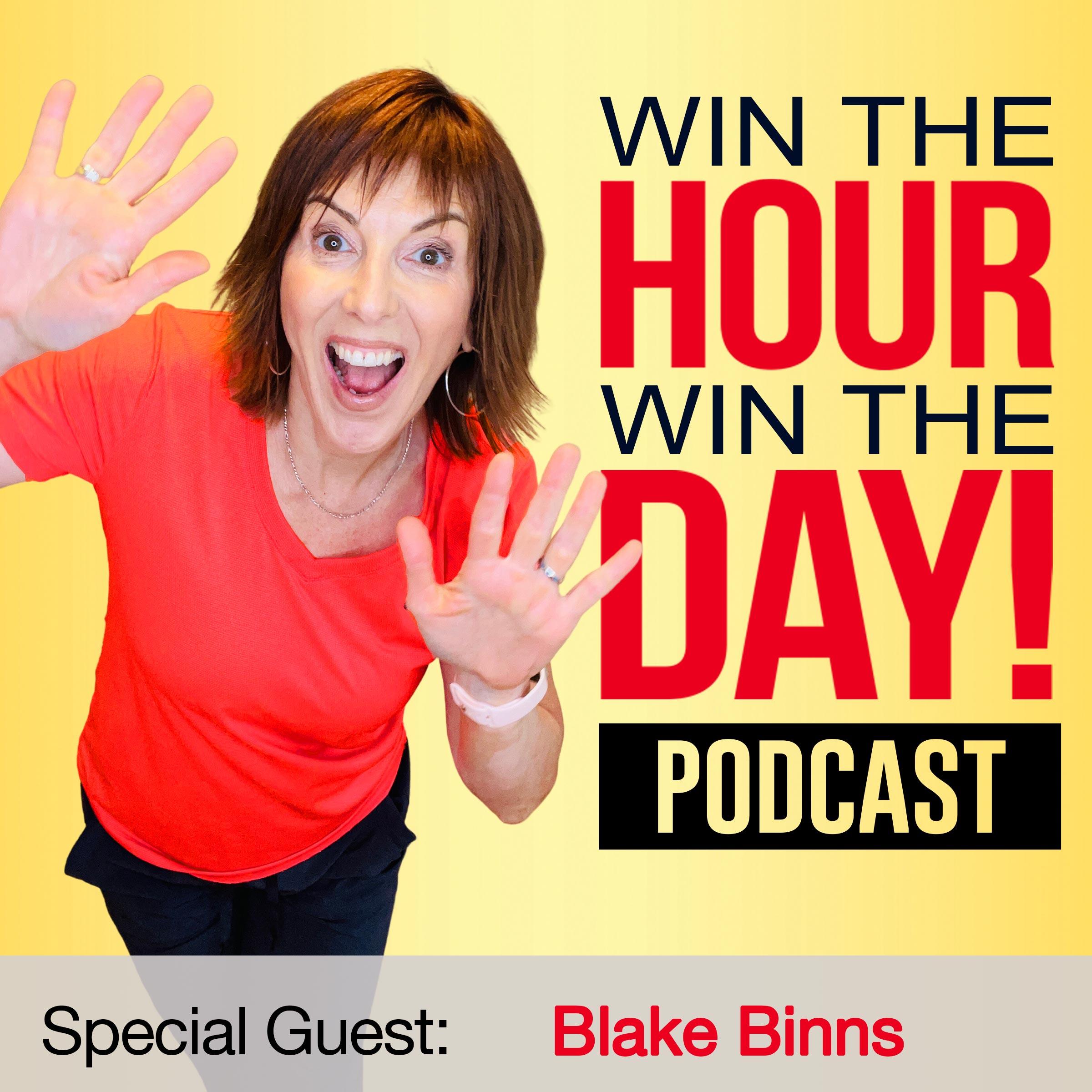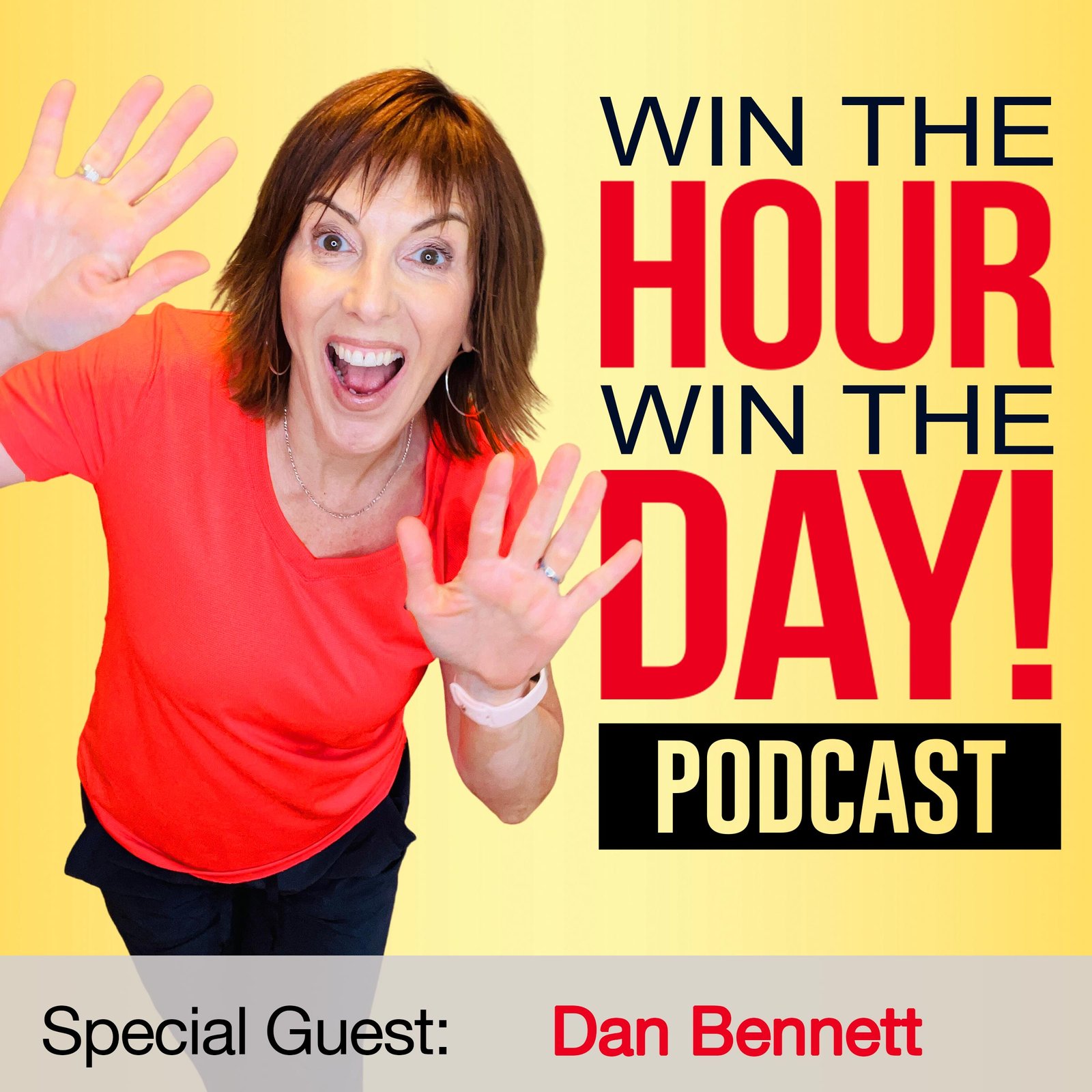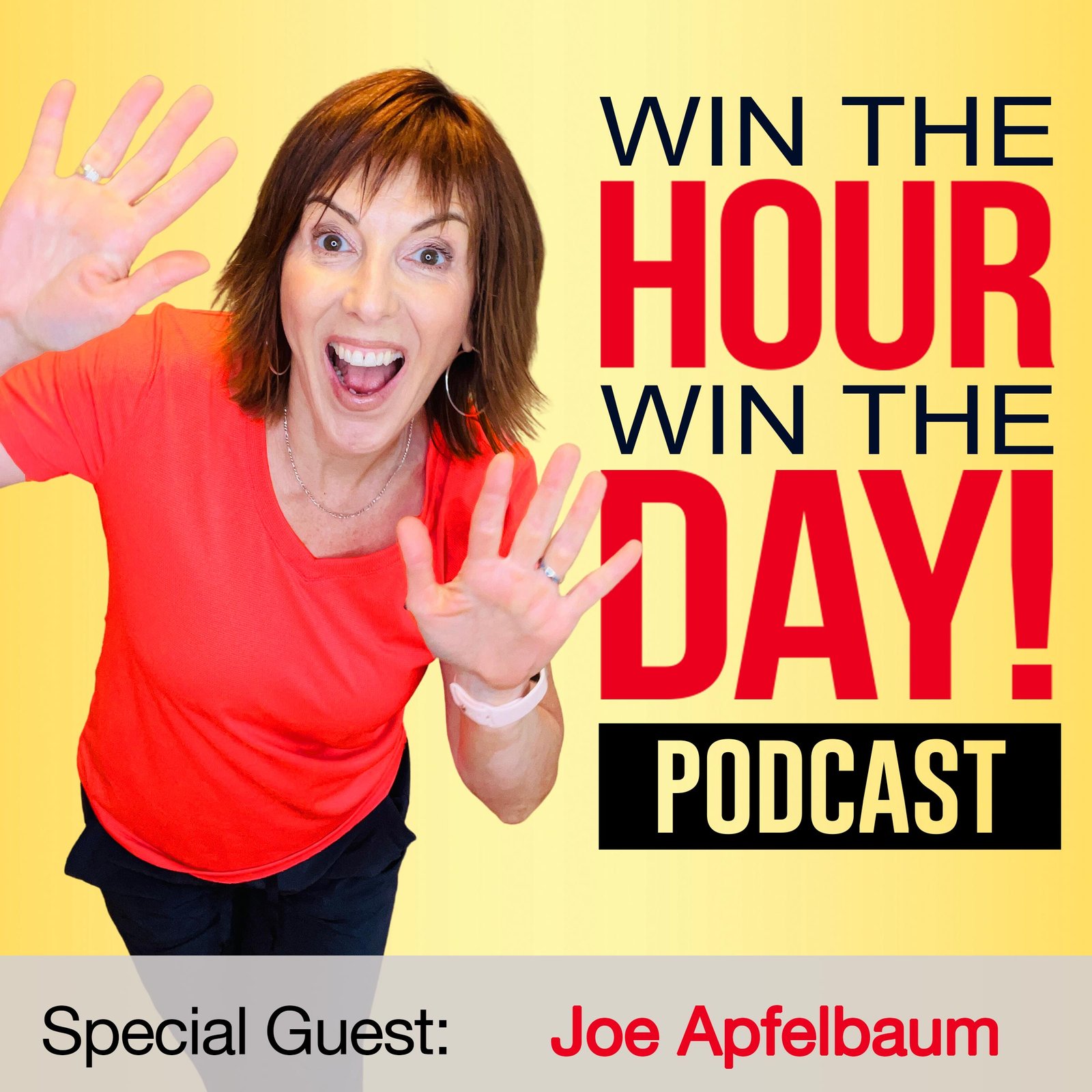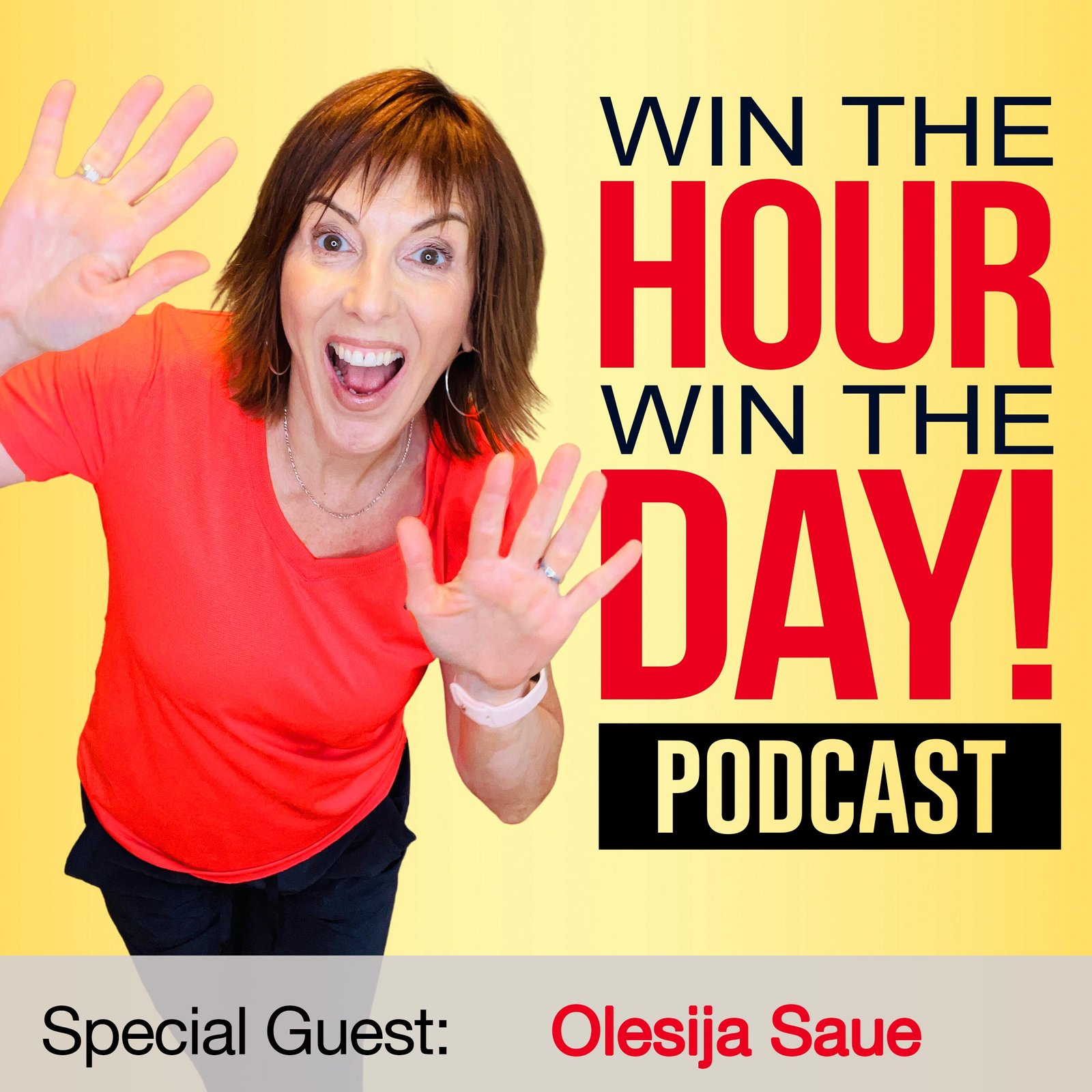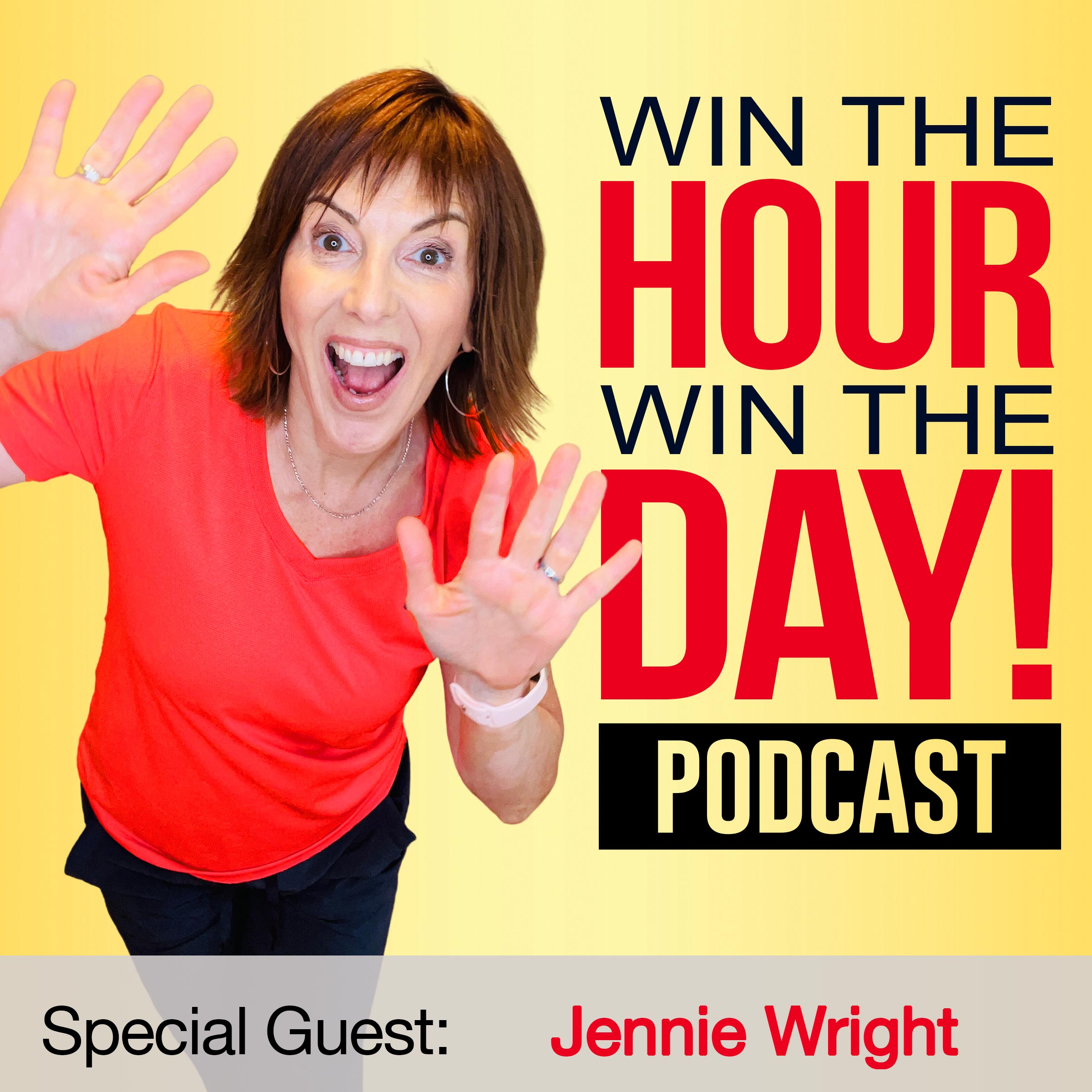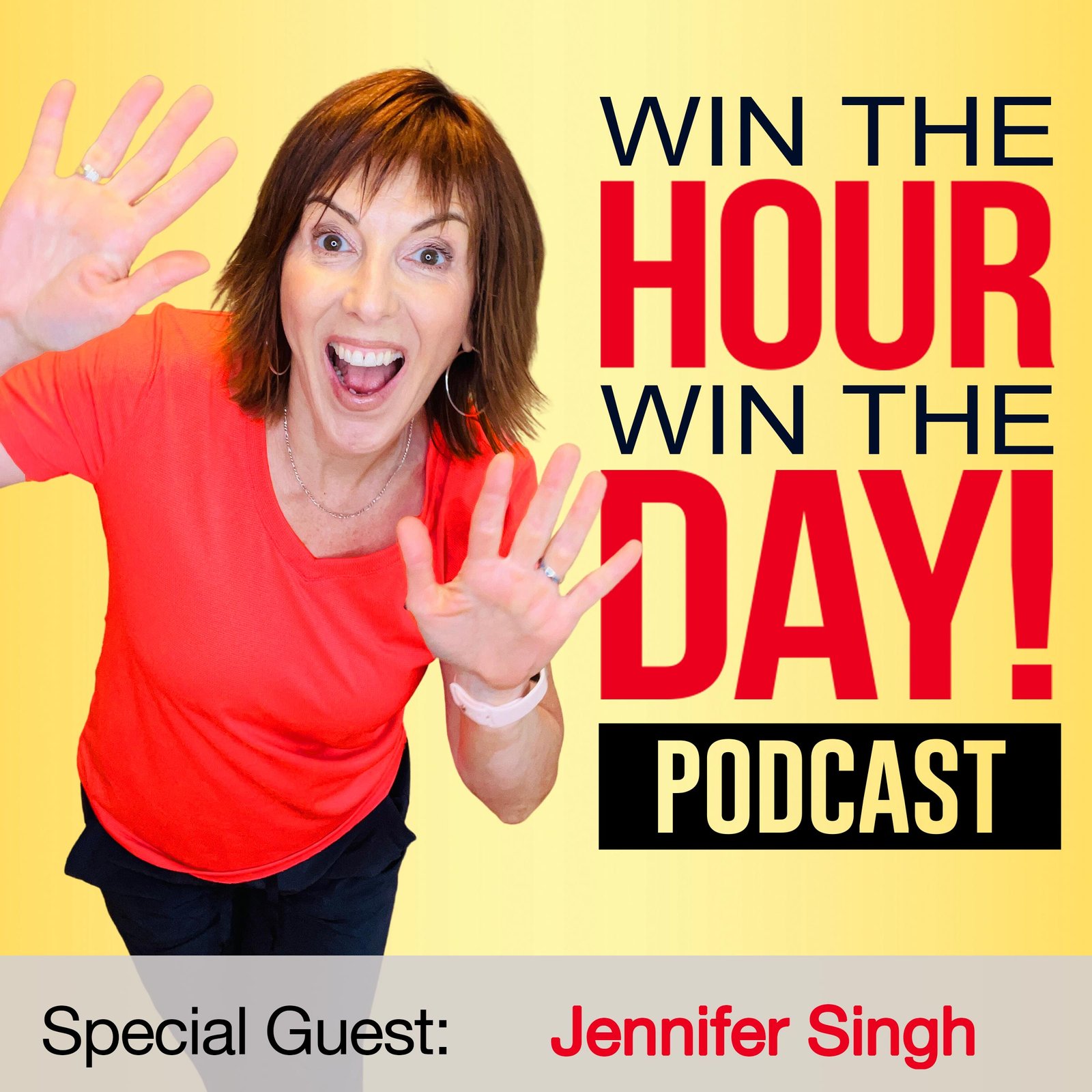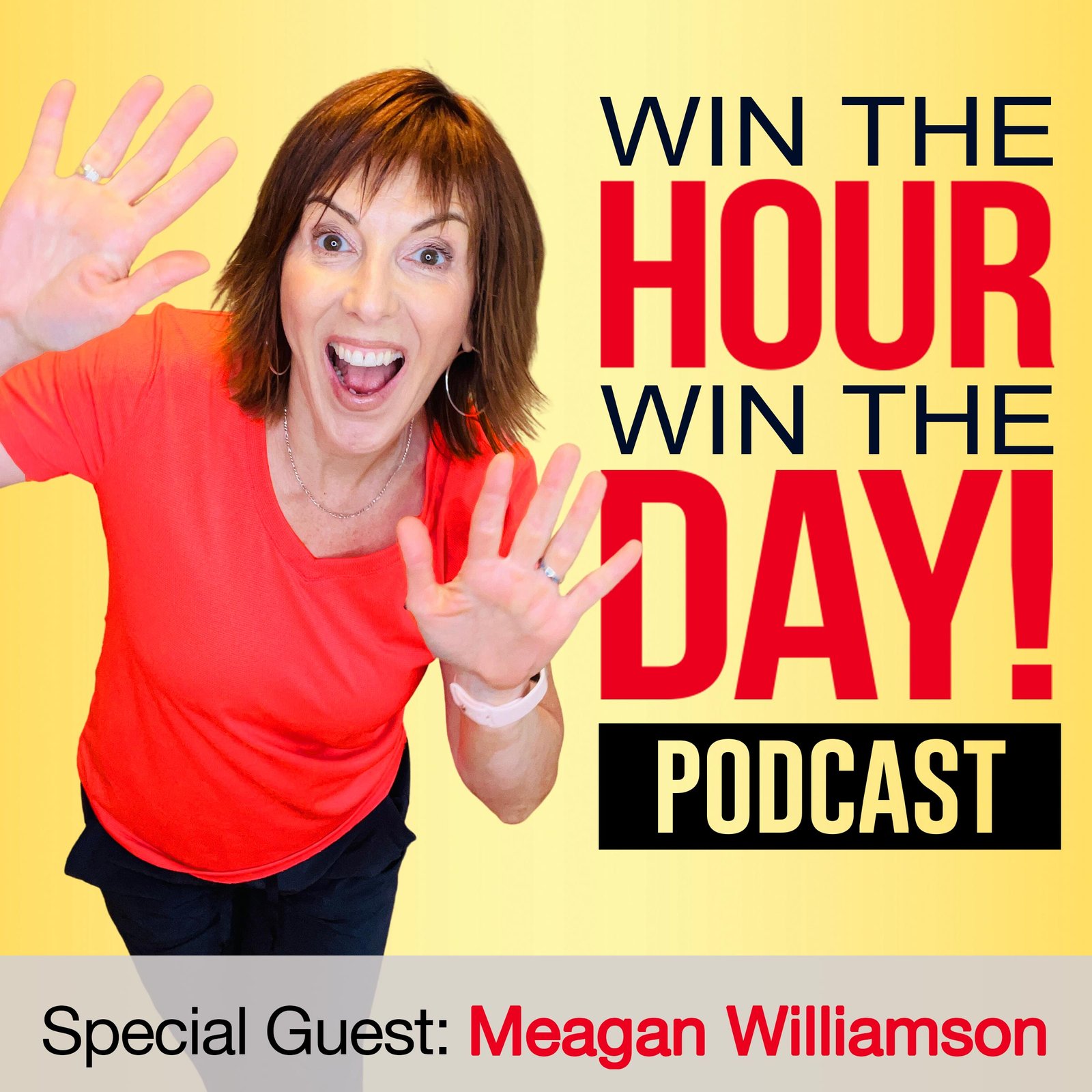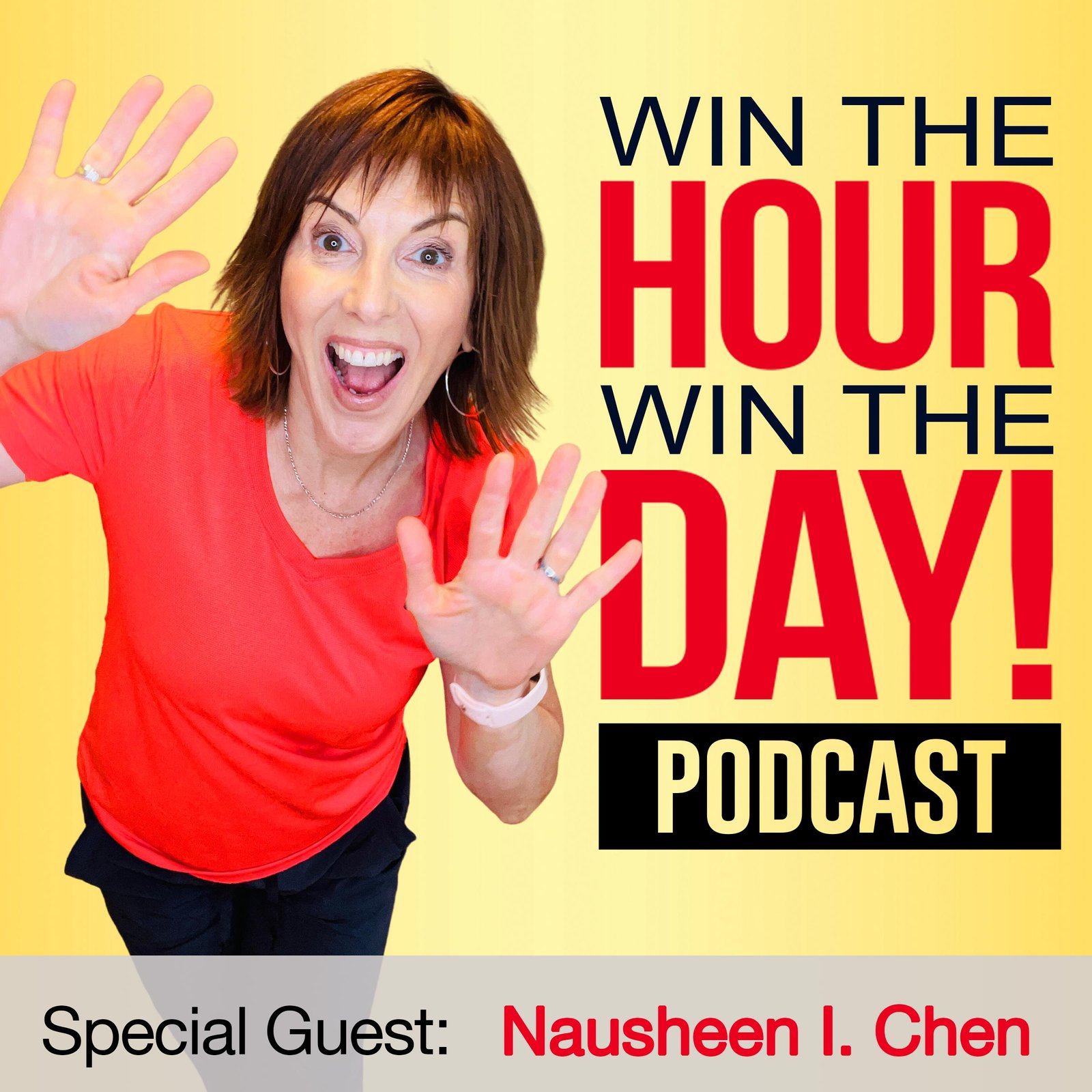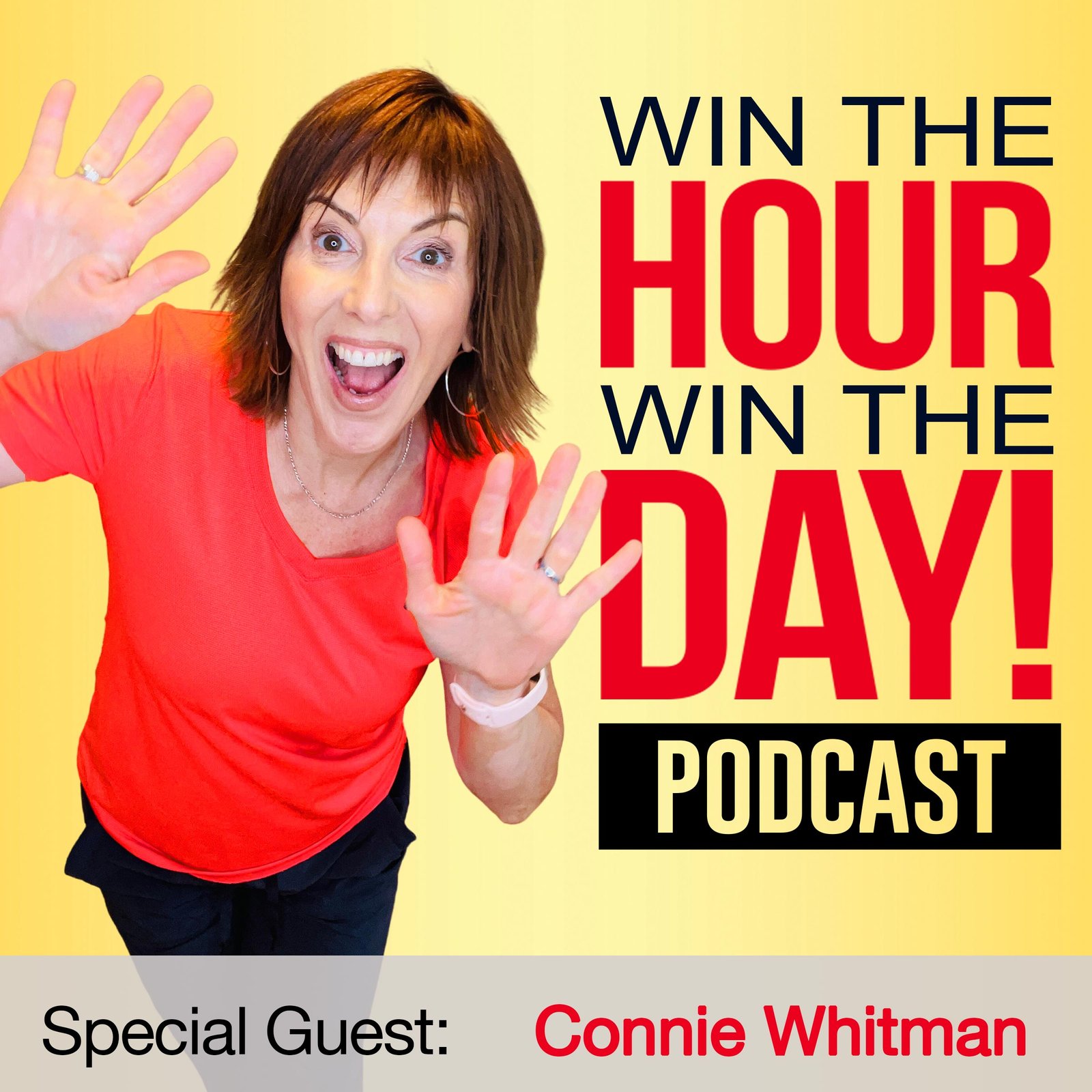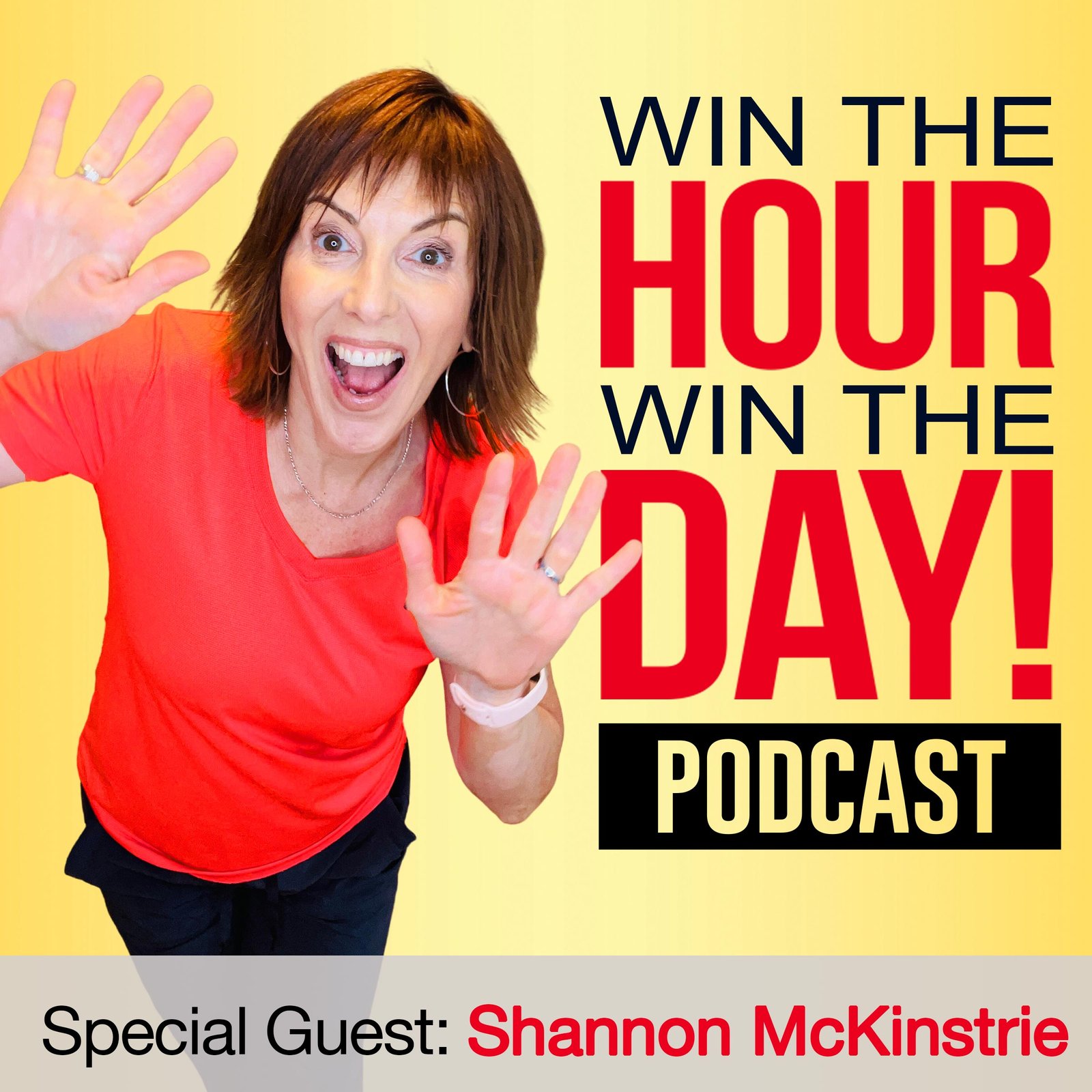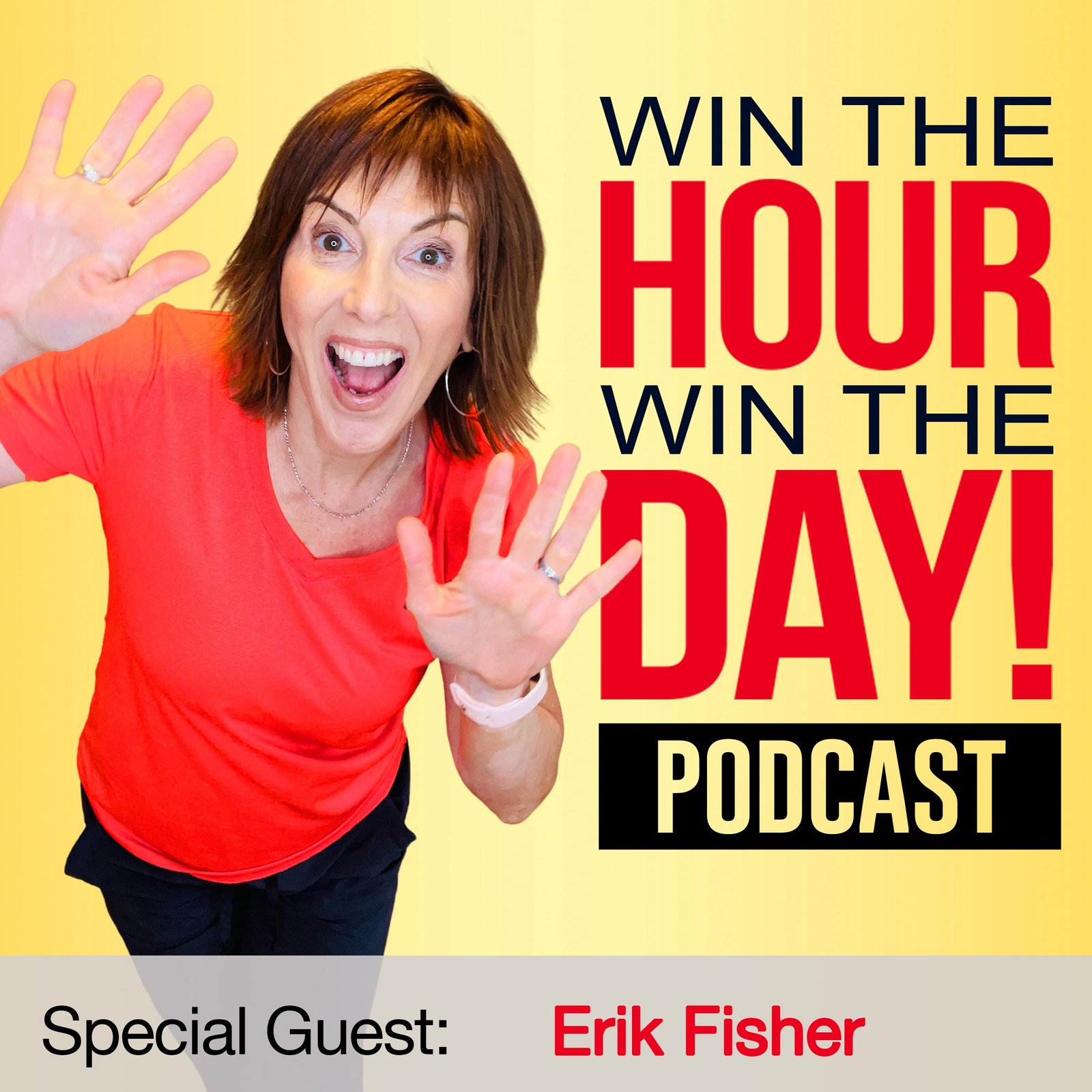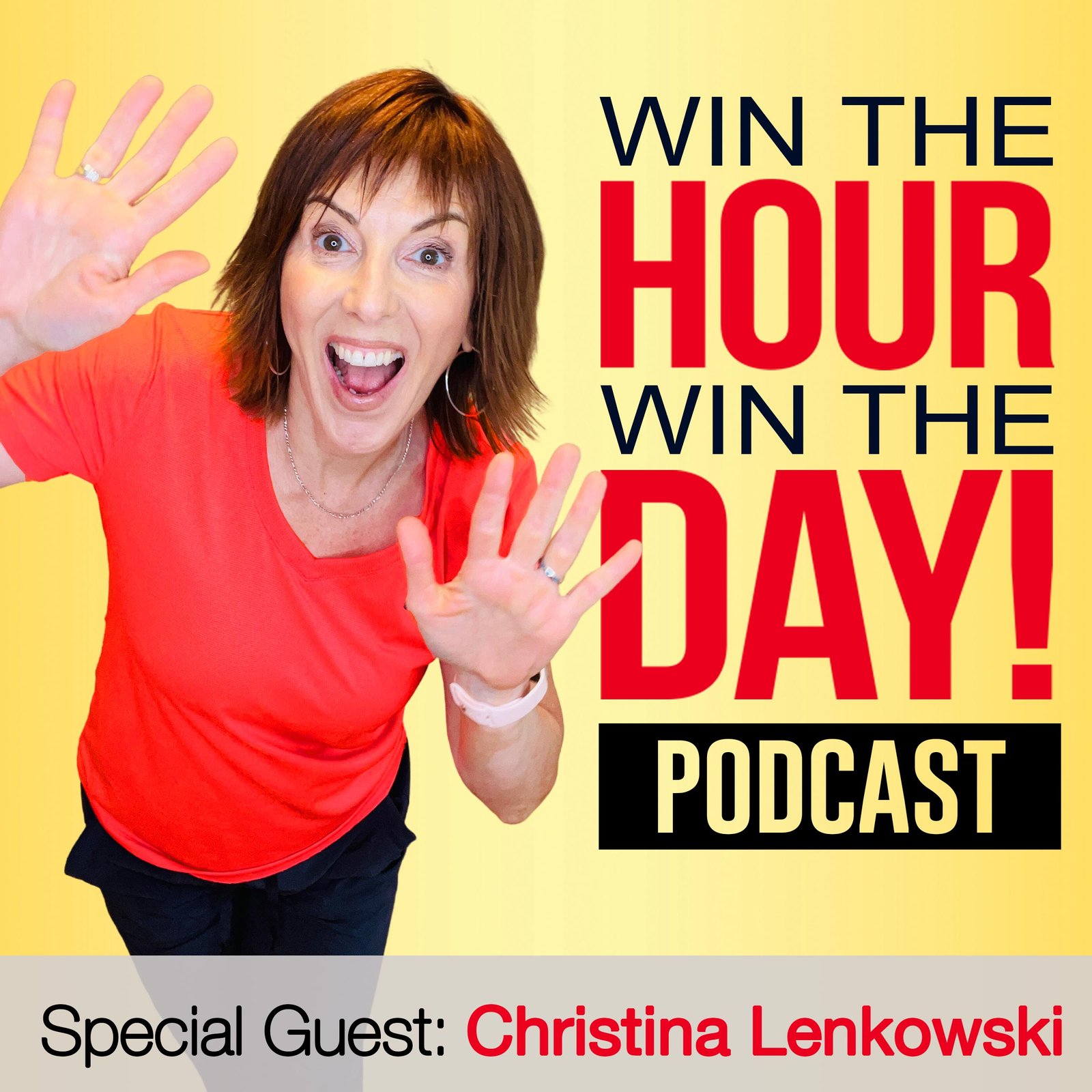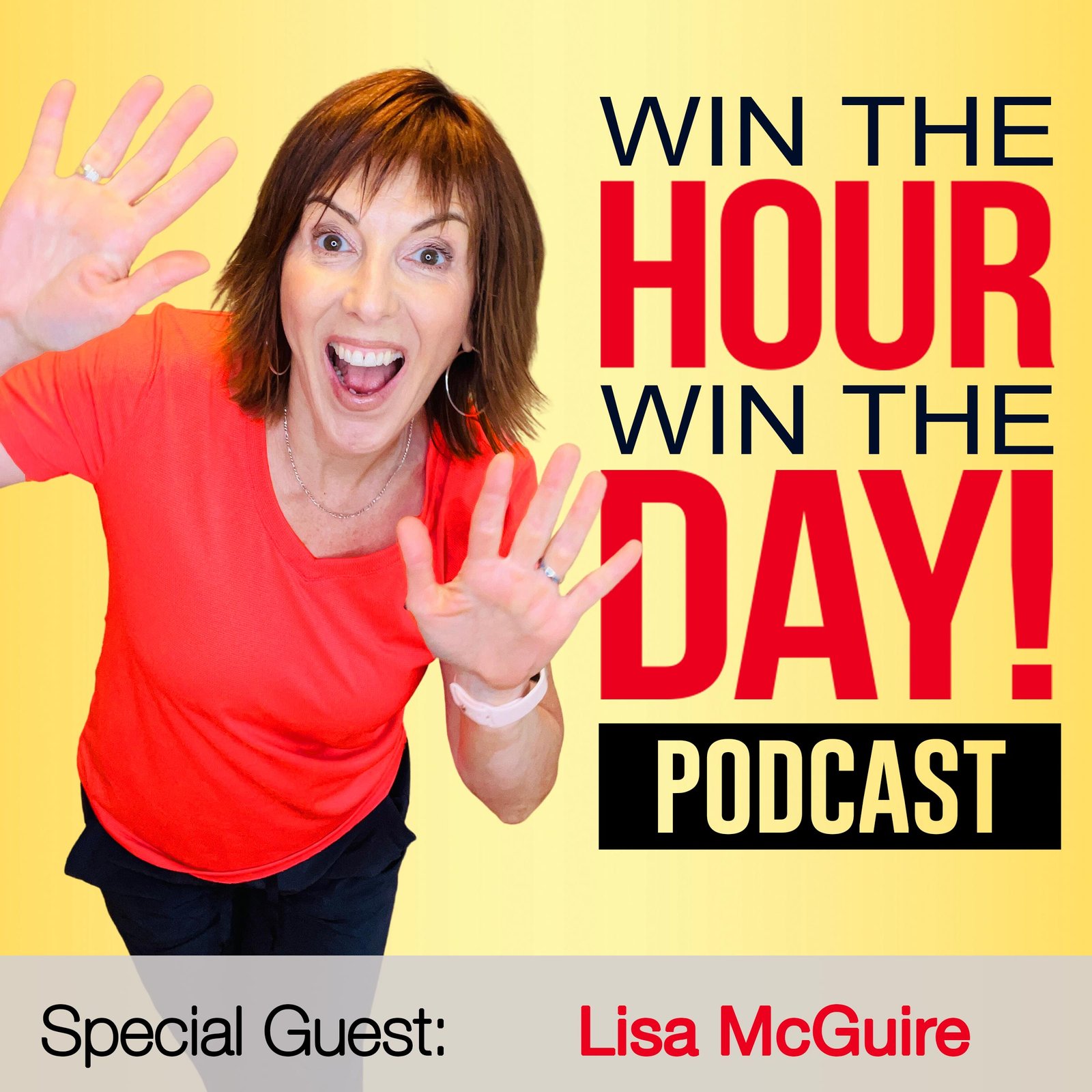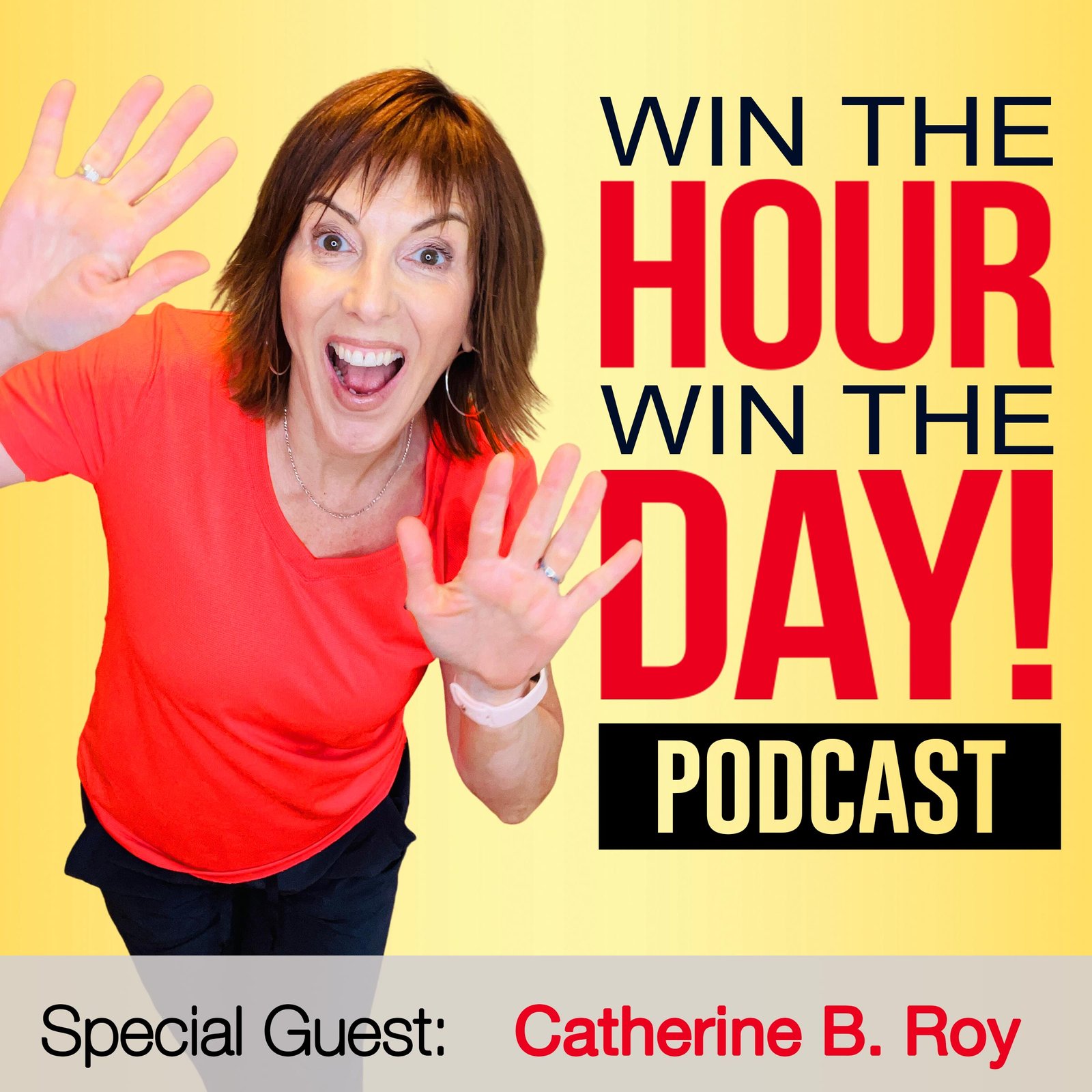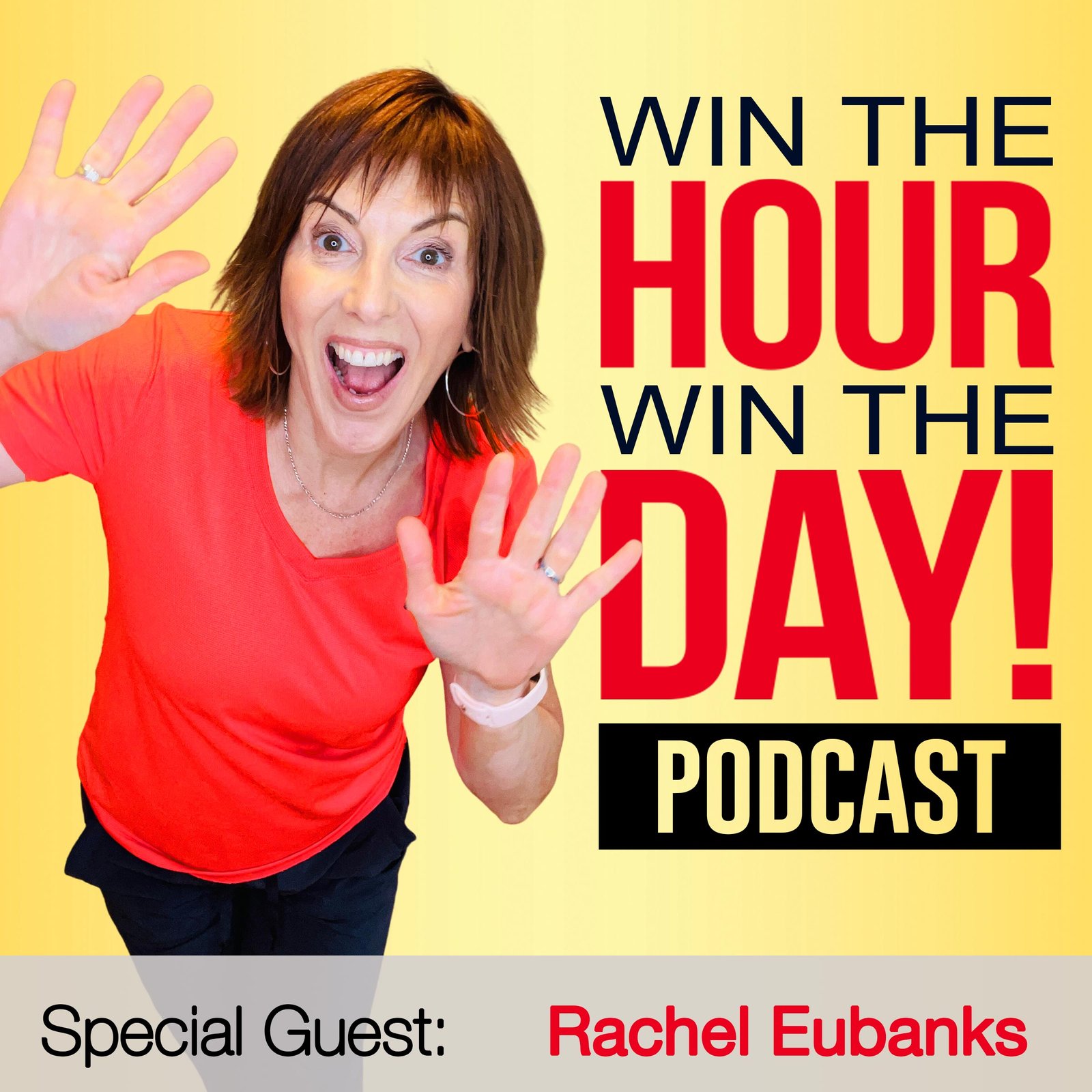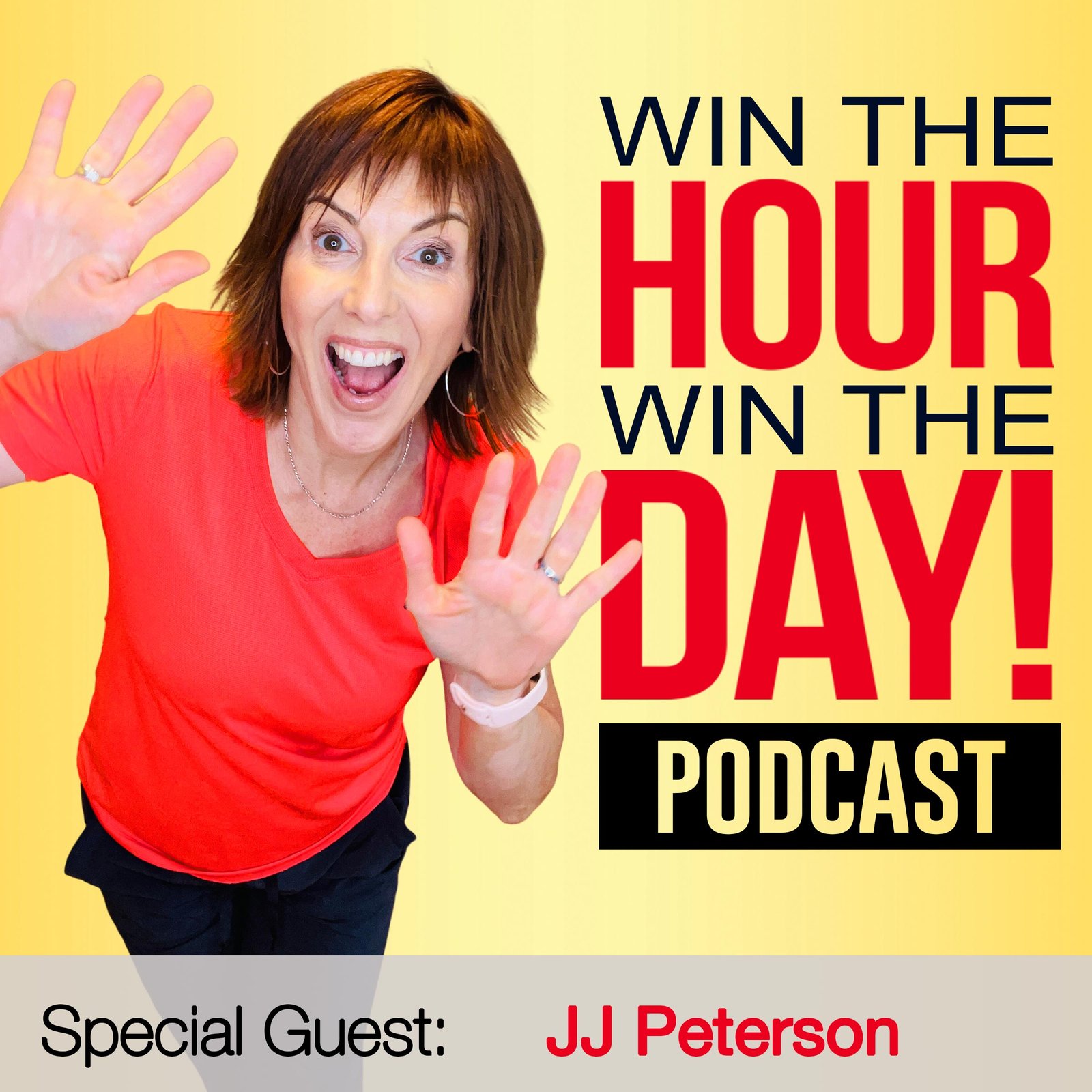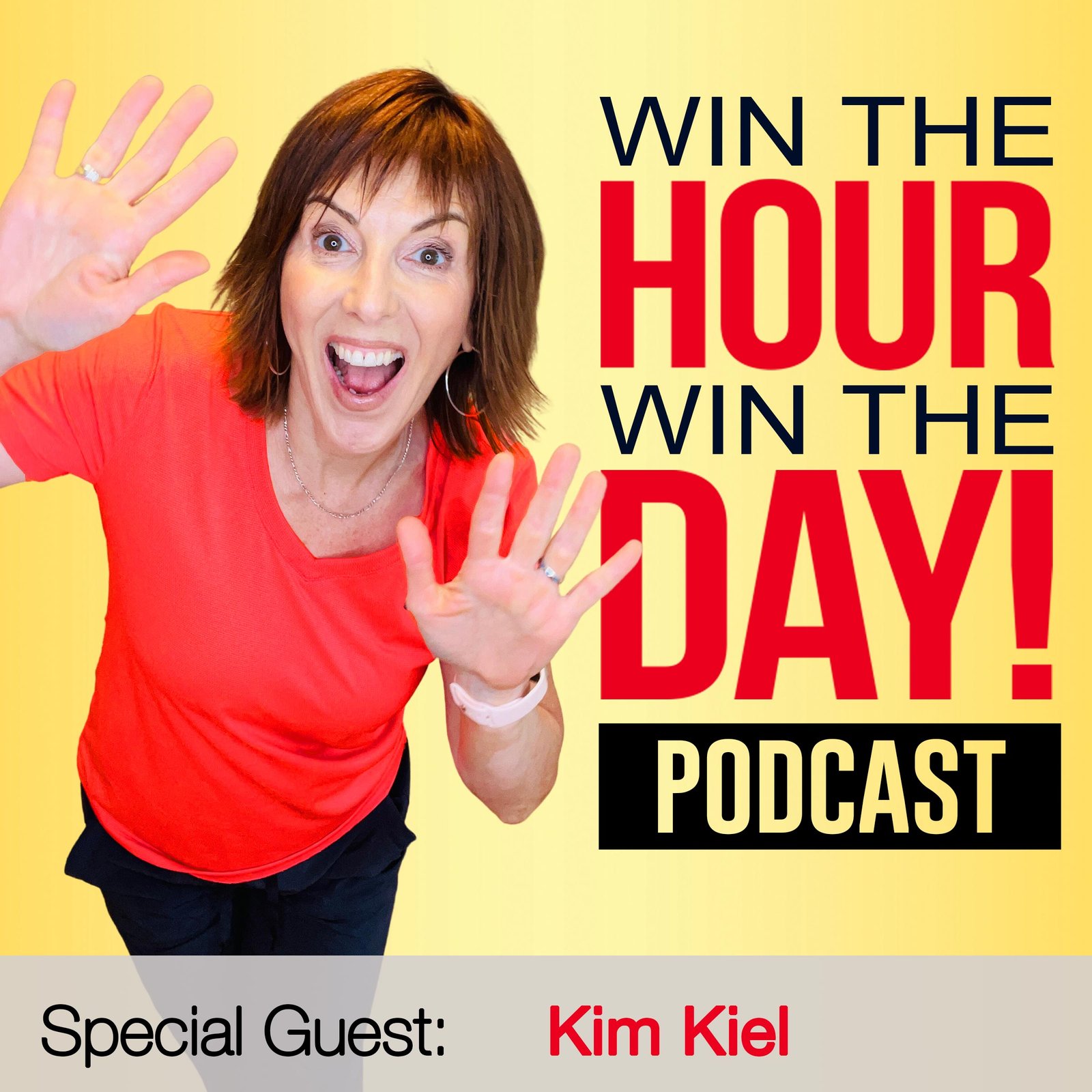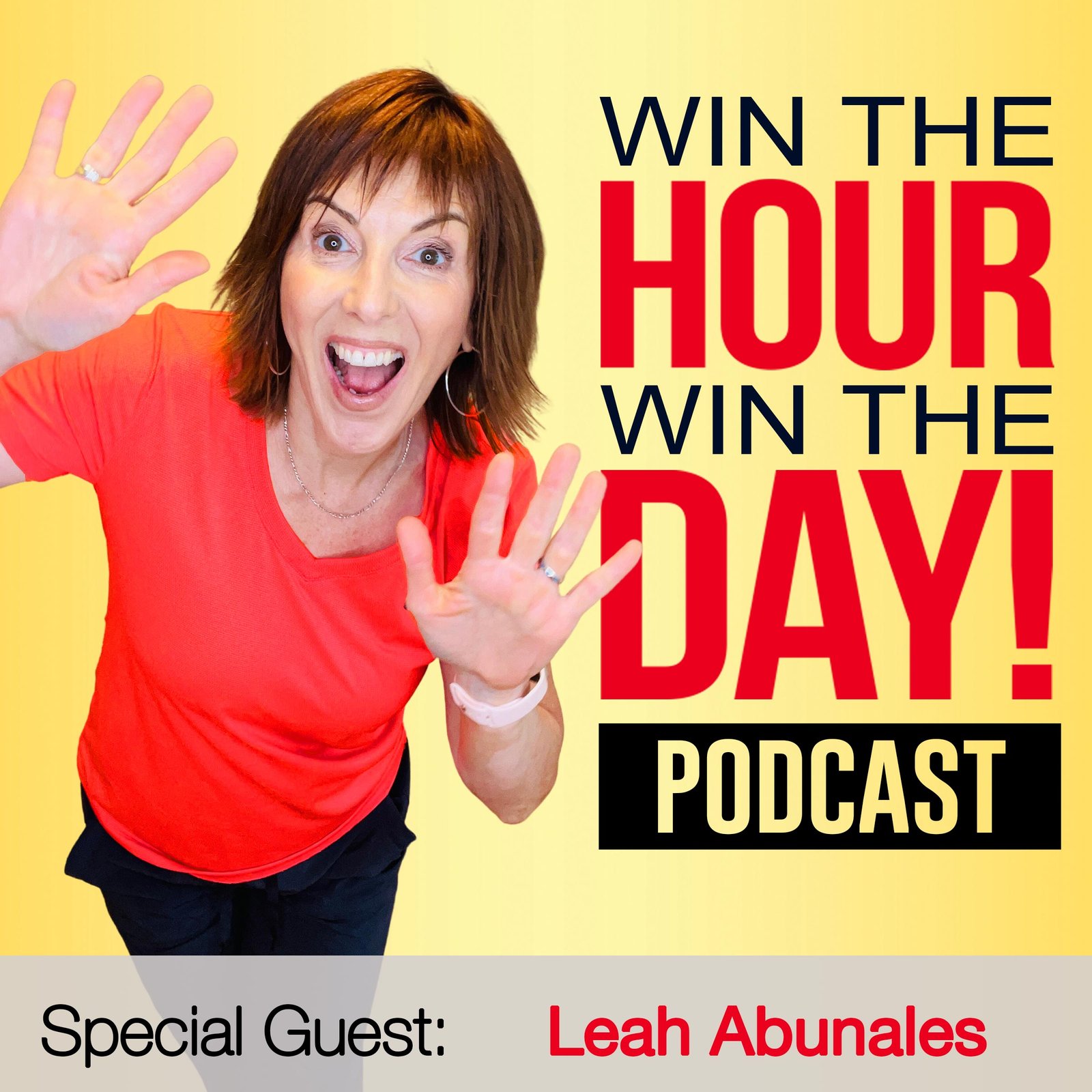Episode Summary This week’s episode of Win The Hour, Win The Day Podcast is...
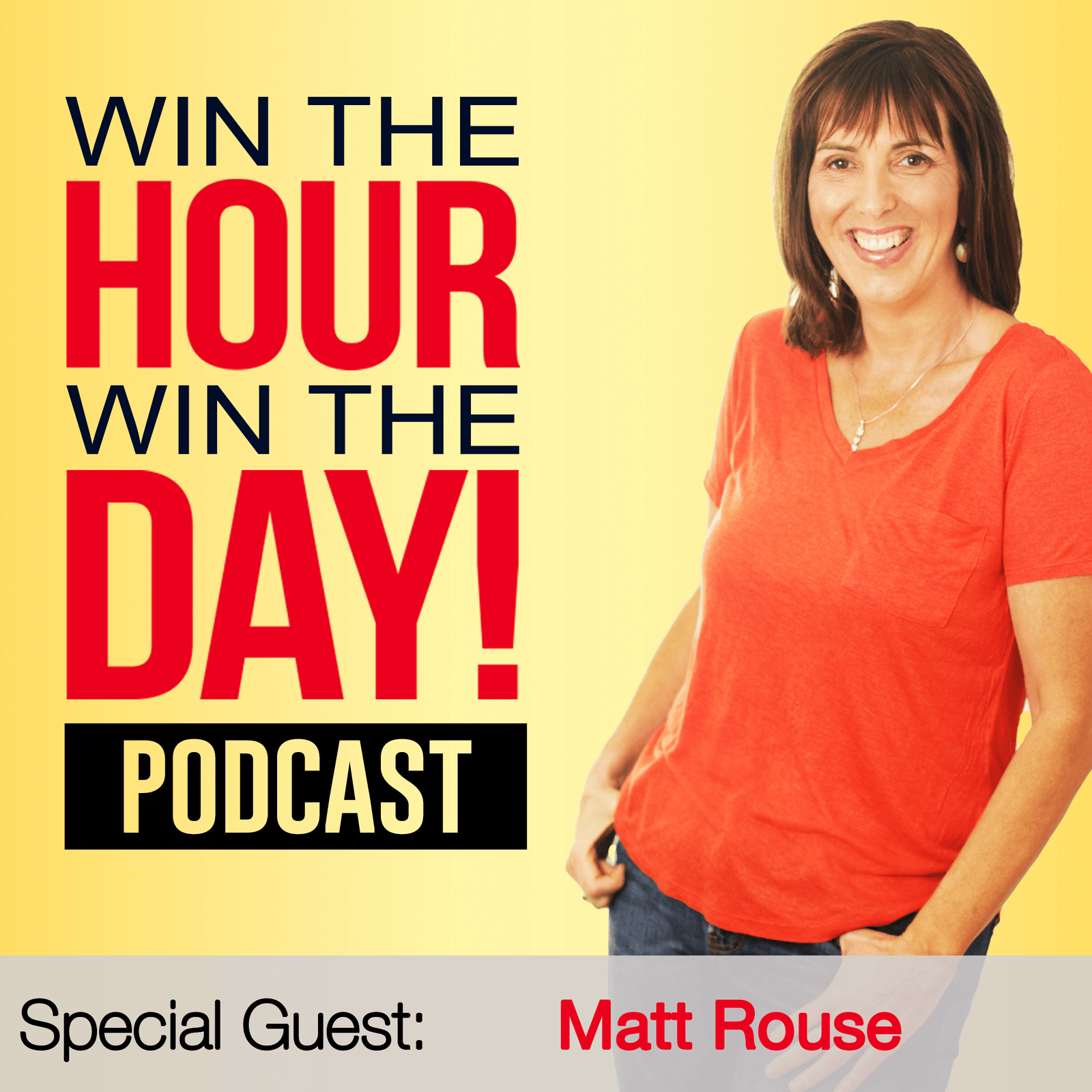
Are You Ready For Your Next Big Win?
Know your entrepreneur personality and I’ll take it from there!
Recent Podcast Episodes
Preventing Burnout with Smart Work Tools! with Kris Ward
Episode Summary This week’s episode of Win The Hour, Win The Day Podcast is...
Master Social Selling: Heidi Medina’s Strategies for Engagement
Episode Summary This week’s episode of Win The Hour, Win The Day Podcast is...
Boost Productivity and Master Storytelling! with AmondaRose Igoe
Episode Summary This week’s episode of Win The Hour, Win The Day Podcast is...
Master Video Marketing: Top Tips for Entrepreneurs with Dan Bennett
Episode Summary This week’s episode of Win The Hour, Win The Day Podcast is...
Boost Your LinkedIn Strategy with AI Tools for Enhanced Productivity! with Joe Apfelbaum
Episode Summary This week’s episode of Win The Hour, Win The Day Podcast is...
Mastering Personal Branding with NLP Techniques! with Olesija Saue
Episode Summary This week’s episode of Win The Hour, Win The Day Podcast is...
Innovative Lead Generation and Email Automation Secrets with Jennie Wright
Episode Summary This week’s episode of Win The Hour, Win The Day Podcast is...
PR Strategies for Diverse Entrepreneurial Impact! with Jennifer Singh
Episode Summary This week’s episode of Win The Hour, Win The Day Podcast is...
Convert More Clients on LinkedIn with Richard Moore
Episode Summary This week’s episode of Win The Hour, Win The Day Podcast is...
Master Business Growth on Pinterest with Meagan Williamson
Episode Summary This week’s episode of Win The Hour, Win The Day Podcast is...
24/7 Sales Boost: Video Marketing Secrets with Alex Sheridan
Episode Summary This week’s episode of Win The Hour, Win The Day Podcast is...
Master Public Speaking Tips with Nausheen Chen!
Episode Summary This week’s episode of Win The Hour, Win The Day Podcast is...
Beating The Burnout With Connie Whitman’s Success Story
Episode Summary This week’s episode of Win The Hour, Win The Day Podcast interviews,...
Craft Your Social Media Content Strategy With Shannon McKinstrie
Episode Summary This week’s episode of Win The Hour, Win The Day Podcast is...
Boost Your Productivity with AI Tools: A Deep Dive with Erik Fisher
Episode Summary This week’s episode of Win The Hour, Win The Day Podcast is...
Boost Visibility: Repurpose Content and Leverage Podcasts With Christina Lenkowski
Episode Summary This week’s episode of Win The Hour, Win The Day Podcast is...
Master Personal Branding & Storytelling with Lisa McGuire
Episode Summary This week’s episode of Win The Hour, Win The Day Podcast is...
Boost Business on LinkedIn with Catherine B. Roy’s Strategies
Episode Summary This week’s episode of Win The Hour, Win The Day Podcast is...
Scale Your Business: Optimizing Virtual Assistant Services with Kris Ward & Rachel Eubanks
Episode Summary This week’s episode of Win The Hour, Win The Day Podcast is...
Affordable PR Mastery: Crystal Richard Unveils Modern Techniques
Episode Summary This week’s episode of Win The Hour, Win The Day Podcast is...
Mastering Business Storytelling with JJ Peterson’s Guide
Episode Summary This week’s episode of Win The Hour, Win The Day Podcast is...
Revamp Your About Page: Guide to Personal Branding
Episode Summary This week’s episode of Win The Hour, Win The Day Podcast is...
LinkedIn Mastery and Video Marketing Secrets with Alex Sheridan
Episode Summary This week’s episode of Win The Hour, Win The Day Podcast interviews,...
The Systems and Processes Playbook: Insider Secrets to Streamlining Your Small Business with Leah Abunales
Episode Summary This week’s episode of Win The Hour, Win The Day Podcast interviews,...
How To Get Your Email Broadcasts Open! with Matt Rouse
Episode Summary
Matt Rouse gives us the no-nonsense approach to email marketing. It’s simple, useful, and eye-opening. (I’ve learned I’m overthinking the whole thing)
Learn:
-the biggest mistakes most entrepreneurs make everyday.
-the simplest things entrepreneurs can do to get their emails open
-how your list size doesn’t matter like you think it does
-how to protect your emails from the filter monster ugh!
-and so much more!!!
Join The Community: https://www.facebook.com/groups/WinTheHourWinTheDay/
Win The Hour, Win The Day! www.winthehourwintheday.com
Podcast: Win The Hour, Win The Day Podcast
Facebook: https://www.facebook.com/winthehourwintheday/
LinkedIn: https://www.linkedin.com/company/win-the-hour-win-the-day-podcast
You can find Matt Rouse at:
Website: https://matthewrouse.com/
Email: matt@hookseo.com
LinkedIn: linkedin.com/in/mattmrouse
Masterclass: Working Hard Sucks And It’s Costing You Money!
https://winthehourwintheday.com/working-hard-sucks-and-its-costing-you-money-masterclass
Win The Hour Win The Day
https://winthehourwintheday.com
Check out the Outsourcing Playbook For Busy Entrepreneurs here: https://winthehourwintheday.com/outsourcing-playbook
Matt Rouse Podcast
[00:00:35]Kris Ward: hello? How are you?
[00:00:37]Matt Rouse: Good. How are you?
[00:00:39]Kris Ward: I’m well. I’m well, okay, let us get set up and do some housekeeping stuff here and then we’ll get rolling.
[00:00:48]Matt Rouse: Sure. How’s Prince Edward Island today?
[00:00:51]Kris Ward: It’s a little bit cooler than I’d like it, but other than that, we’re good. I can’t complain.
[00:00:58]Matt Rouse: Maybe you’ll get our warm weather.
[00:01:00]Kris Ward: And where are you again?
[00:01:02]Matt Rouse: I’m in the Annapolis valley in Nova Scotia.
[00:01:04]Kris Ward:Oh, sorry. You’re in Nova Scotia. I keep forgetting that because I never get that. Okay. I still would never get to talk to somebody from here. My mom just called me from Ontario. Seeing how hot it was. I’m like, well, we’re not there yet, mom.
[00:01:18]Matt Rouse: So, it’s 24 here yesterday.
[00:01:23]Kris Ward: Oh, it’s going to be 23 on Friday. I think it’s like 14 here. I don’t know how it could be so warm there. Not here.
[00:01:35]Matt Rouse: Just takes a while.
[00:01:36]Kris Ward: Yeah. Okay. Hold on. What I got on here. Here we go.
[00:01:46] Okay. Perfect. Perfect. I forget, cause I never get to talk to somebody in my own neighborhood that is for sure. I don’t even know.
[00:01:57] Okay. Let’s put this back.
[00:02:08] Okay, Matt, is it rose? Okay, let’s do this.
[00:02:22] Okay. Gallery, beautiful. screen check, Mic.
[00:02:35] Okay. So, as I said to you, my human is entrepreneur and businesses about five years. Service-based, I’m looking for things with solid takeaways. Also I do promise to interrupt you cause we want it to be conversational. So usually when I do that, I want to unpack your brilliance and dive in and ask questions.
[00:02:54] I try when I can to put my finger up, but more often than not I’ll just jump in. So there you go. And I check the sheet. The only thing we’re missing, I don’t know if we’ve got a referral from you yet
[00:03:05]Matt Rouse: Yeah. I sent it like five minutes ago, just in case I didn’t send one before.
[00:03:07]Kris Ward: Okay, great. Because the only thing my team leader does is hold up your release date.
[00:03:14] If it’s not all checked off, they’re militant. I have to tell you. Okay, so we’re, what are we covering here? I mean, I know what we’re covering, what’s our governing. We’re going to call it mastering the inbox. Is that what we’re calling it? Okay. Perfect. Okay.
[00:03:29]Matt Rouse: All the things people don’t know about email marketing.
[00:03:32]Kris Ward: Okay. That sounds like something we should talk about. All right. Ready to rock and roll. Okay. Here we go.
START…
[00:03:41]Kris Ward: Hey, everyone. Welcome to another episode of Win The Hour, Win The Day podcast. I am your host, Kris Ward. And today we have Matt Rousse in the house. Yes, I’m a rapper. It Rhines. Okay. Like, can’t take credit for it.
[00:03:55] That was the name he was given. Okay. So Matt is going to talk to us about mastering your inbox, all the things that you’re not doing, that you should be doing that kind of stuff. So let’s just dive right into it,Matt. Tell me, you know what it is, we’re neglecting what it is. We, you don’t know what you don’t know, what do you see us doing wrong?
[00:04:16]Matt Rouse: So I think what happens is when people start thinking about email marketing, they think about the emails that they see, and they don’t really think about the process of what it takes to get an email from the time that you write it to the time it lands in the inbox. And it’s actually a pretty long drawn out process.
[00:04:37] And I won’t get into all the technical pieces of it. It’s just that it’s a digital world. All that stuff happens really quickly. So people don’t understand what’s going on. But, I think the first thing that people need to understand when it comes to email marketing, is trying to get people subscribed to your list who are in your target market and not just anyone, right?
[00:05:00] You need to really, really kind of refine who it is that you’re trying to reach and figure out what it is that that person wants to solve their problem that you can give them some kind of quick hit and that generally is called a lead magnet. Some people call it gated content. That’s where you would give your email to subscribe to something or to get something for subscribing.
[00:05:27]Kris Ward: So, okay. So let me just jump in here. So the first point you made, which I think is really important. And I think, sometimes we know it, but we forget how important it is. So don’t get caught up on how big your list is because it’s kind of like being I don’t know, in a bar with, you know, 500 people of the opposite sex.
[00:05:46] So say you’re, you know, a guy you go into a bar and there’s 500 women. Doesn’t mean they’re all going to be interested in you. So you’d be better served to have five that are really interested in you than 500 that you know, now you’re trying to get their attention. So don’t get all excited about the volume of your list. You want to make sure it’s really, you know, as niche down as you can.
[00:06:06]Matt Rouse: Yes. And you know, another mistake that people make early on when they start generating a list is they don’t send anything to those people because they don’t think their list is big enough yet. And the truth is that the people who signed up don’t know how many people are on the list.
[00:06:23] Right. So if somebody signs up to hear from you, you should be speaking to them. Right. Otherwise you’re just ignoring them and they’re going to forget they signed up and then they’re just going to mark it as spam or something. And then, you know, you don’t want that to happen.
[00:06:36]Kris Ward: You know, and that is a good point, even though I just, you know, I talked about that, you could have a list of 20, but they deserve the same respect. If not more like if you got an audience, if you’re doing a speaking gig and there’s 20 in the audience, you might like anyone. Oh, I’m a little disappointed. Only 20, but these 20 people showed up, they showed up when the others didn’t. So they deserve the best show. Right. Okay. So treat it all with respect.
[00:06:59]Matt Rouse: Yeah. And, and you have to remember that people don’t know who’s on your list, who else is on your list? That kind of stuff. So, you know, you need to. Like you said, have respect for the people who did join. And I think the next step, you know, once you can get people on your list and you know, without getting too in-depth.
[00:07:21] I mean, we could do a whole series as a whole podcast series just about ways to get people on your list. But I think the important points to remember are; you want to give someone something that is going to solve a problem for them. Generally it could be like a worksheet. It could be like a challenge.
[00:07:40] It could be like the fitness industry. It could be like an exercise sheet. It could be a smoothie challenge. If you’re in, like my industry, we have outreach challenges to teach outreach, stuff like that. Right. When they sign up, they immediately get something. And then that subscribes them to your list.
[00:07:58] And the next step is to start sending them things. And what people generally do is they immediately start trying to send things, to sell things to people, and that’s not the right thing to do.
[00:08:12]Kris Ward: Do they? like I would. Sometimes people come on the show and they tell me things and I feel like saying, are they really doing that?
[00:08:19] Like this? And Tina has common sense that if somebody, they sign on your list, like you can’t five minutes into it, just blitzing them. You’re going to lose them. Is that still a problem?
[00:08:28]Matt Rouse: Yes.
[00:08:29]Kris Ward: Okay. All right.
[00:08:32]Matt Rouse: As a company who runs a mail server, I can tell you that this is a problem because we see it and listen to it.
[00:08:36] I mean, we get thousands and thousands of thousands of emails a day that are just pointless. But you know, nobody’s going to read, nobody’s going to keep subscribing. They’re just going to unsubscribe. We see so much spam. It’s unbelievable. So, you have to remember when you’re in your inbox, you’re only seeing the mail that made it.
[00:08:52] You’re not seeing the stuff that didn’t get there. There’s a lot of that. And what you don’t want is you don’t want your email to be in that email that didn’t get there.
[00:09:04]Kris Ward: Right. Okay. So make sure it’s.. okay, I’ll tell you people, but I get, I think we know it. Don’t just start selling out of the gate.
We all curse LinkedIn for that. So don’t be doing it with your own email list. So we want them on the list to keep you top of mind, to keep the list warm and to keep them engaged. That’s the goal, correct?
[00:09:22]Matt Rouse: Right. Okay. And there’s a number of ways to do that. It’s going to be different for every business.
[00:09:25] You’re going to need to know your audience, or at least if you don’t know your audience that well yet, then you’re going to need to test some things out. See how it works. I think the barometer that you need, there are two ways to test. If you are something like an e-commerce store, you’re selling physical goods, or kind of a quick hit service, you know, something that’s kind of a one-time service.
[00:09:48] Sales is definitely going to be your barometer. That’s how you test if your email list is working, but if you’re not and you’re in another industry or in coaching, marketing, sales.
[00:09:58]Kris Ward:Yeah. So our audience is service-based entrepreneurs. Yeah.
[00:10:03]Matt Rouse: And for most kinds of service types, you can tell if your email list is working, if someone replies to you, right.
[00:10:13] Now I taught email marketing classes in person for years. And when I say you want to have people reply to your marketing emails, everybody stares at me, like I just showed them a card trick, right? Yeah. They’re like what? And I’m like when I send out my emails to my list, I generally get about a 0.1% reply rate. That means one person out of every thousand will write to me back.
[00:10:38]Kris Ward: Okay. So we’re not talking, just clicking in the call to action or anything like that. We’re just talking, they respond back to you. Great. Okay. Perfect. I don’t, you’re right. I don’t think a lot of us are using that as a barometer of measurement.
We’re just looking at whatever the open rate, the click-through rate, all that stuff. So are they responding? Okay.
[00:10:55]Matt Rouse: Now what happens when somebody responds most email programs will put the email address that they’re responding to, into their contact or their address book. It also generally marks your address as not being “SPAM”.
[00:11:10] Which means if they’ve replied to the email that you’ve sent, the next email you send doesn’t land in the spam box, it will go straight to the inbox because your mail program and your mail server understand that this is someone that I have conversations with. So I want to make sure that that email arrives.
[00:11:30]Kris Ward: Okay, sorry, go ahead.
[00:11:34]Matt Rouse: Well, I was going to say, so the goal is as early or as often as possible is to get people to reply to your emails because once they reply that guarantees delivery for a period of time after that, which is a variable amount of time, but usually it’s at least to here.
[00:11:53]Kris Ward: So give us suggestions for encouraging replies.
[00:11:55]Matt Rouse: My favorite email to send is something to the effect of, ”Hey, welcome to whatever the name of your list is, or, you know, you call it your email club or whatever, right. I just wanted to say, thanks for being here. I’d love to know if there’s anything I could help you with or what your goal is with, you know, the topic of your list.
[00:12:20] Just hit reply. I read every reply myself personally.” Okay. And then people will reply and they’ll be like, oh, you know, so if you’re sending them an email, from a service industry business, and you say, “Well, what’s a good example of a service business for you and I’ll tell you what I would, right?”
[00:12:44]Kris Ward: Yeah. Well, so for us, we help entrepreneurs stop working so hard and, you know, we do that through building their W.I.N Team and what we call Super Toolkit. So it’s really their burnout working too hard.
[00:12:56]Matt Rouse: So I would probably have an email that gets sent after whatever the original thing they signed up for the next email that they would get would be something to the effect of,
[00:13:07] “Thanks for signing up to the Win The Hour, Win The Day email list. I just want to let you know, what you can expect is every week I’m going to send you this and this and this, but I wanted to ask you one question first, what would you do if you could grow your business and save X amount of hours a week, just reply.
[00:13:30] I read every report by myself personally. Thanks again, Matt, you know, thanks again from Kris Ward, right?” And then what happens is a lot of those people will reply to that email and they’ll say, oh, you know what? I’d love to take a vacation. Or I can’t remember the last time I did such and such. I would play my guitar again.
[00:13:47] I would start painting and whatever it is, right. And then it’s also important that you reply back to them again. So there is a little bit of a time factor, but..
[00:14:57]Kris Ward: I have time if they’re interested in me, I’m interested in them for sure. I got time for that.
[00:14:02]Matt Rouse: Here’s a great one. So we had someone at one of our cores actually, right before break, before COVID locked down started, and they ran a used car dealer.
[00:14:11] And they had a massive list, right? They got over a hundred thousand people on their list and they’re getting almost no click throughs on their lists. Basically everything they have is going to spam. So what we did is we took a picture of two cars, put in the email and said, “If you had to pick between these two cars, which one would you pick, reply and I’ll send you all the results.”
[00:14:33] And they had thousands of replies. Well, email replies because someone would be like, “I like the Mercedes. Someone was like, I like the Corvette or whatever.” Right. I don’t remember which two cars it was to be honest, but, they tallied up and they said, okay, well, it was hundreds for this one and hundreds for this one.
[00:14:50] Right. And this was the winner. It was super simple. It didn’t really have anything to do with selling it. Wasn’t selling any cars. However, the next email they sent after that had cars in it. Somebody came in and bought a car. They spent $35,000 on a car. And they said that they just, well, they thought they had taken them off his email list because they haven’t heard from him in so long.
[00:15:12] And the reason that nobody had heard from them is that all of his emails were going to the spam box. But as soon as everybody had replied, he had sent an email that didn’t have links in it. It didn’t have a bunch of sales jargon in it, then it made it through, the people replied. Now they start getting the emails again. Anyways, this is the value of getting replies, right?
[00:15:35]Kris Ward: Sorry. So I have two questions there. One is; all right. What is just, even though they weren’t going to win the car, it was just engagement. It was just a question. Got them engaged. That it’s that simple. Okay. And then the second is you mentioned this before, when we were chatting from time to time, we’re all taught about click-through and links and so important. And having some emails with no links. It works in your favor.
[00:16:03]Matt Rouse: Yes. Okay. So there’s a thing that mail servers have, and it’s different because different mail servers use different types of software to detect spam. Okay. But generally how they work is they have a spam scoring system and the mail provider sets a certain threshold.
[00:16:23] That is a score of how spammy the computer thinks the email is. Okay. So I’ll give you an example. Okay. So on our mail server, it’s a score between one and 10. We have our set at five. If something has a spam score that is over five. It doesn’t get delivered. Okay. So if an email comes in, the link in the email, or if it has a link in the email.
[00:16:51] Okay. If the link doesn’t match the domain that the sender’s email is from. So let’s say it’s winthehourwintheday.com, but your email goes to kajabi.com. That’s another spam point because spammers don’t want to put links to their own domains because they don’t want to lose their own mail access for being spammers.
So anyway, if you put the words. Sale celebration event. You know, basically anything that you could see as a sales topic, that’s going to add another to your spam score. If it has a photo, that’s another one, right?
[00:17:31] Any, any amount of photo. So usually if it’s one photo or 20 photos, it’s still just one point, but it’s different for different software.
[00:17:40]Kris Ward: Okay. So hold on. I didn’t know that about photos at all. I’ve had photos break it up and it’s engaging. So I would be better served to have no photo.
[00:17:49]Matt Rouse: So I don’t know if you’d be better served to have no photo. It really depends on how much other stuff you have. It’s kind of a trade off. Right. So like, if an email has a theme kind of structure to it, instead of just a straight text email, that’s going to add another point to the spam score. Because people who send email to each other person to person don’t generally use an email feed with a structure and a frame and photos. And, you know, they say, ”Hey, what do you think about us going to the wide bar on Friday at six? Right.”
[00:18:30]Kris Ward: Here’s a picture of me thinking about it.
[00:18:32]Matt Rouse: Here’s a picture, let me go into the thing, but they don’t, but are, you know, buttons. They don’t put, you know, structure and all of this kind of stuff to it.
So anyways, there’s a number of these types of things. It could be if you have; “To view this in your browser, click here.” If that’s in the preview line of your email, that’s going to add to the spam score.
[00:18:41]Kris Ward: Okay. And the spam score we don’t control. Like that’s just, you know, this imaginary thing, this gatekeeper protecting us the consumer, but it also limits us when we are the marketer.
[00:19:09]Matt Rouse: Yes. It is a piece of software that neither the email recipient, nor the marketer have any control over. Unless you own your own mail server, which is really unlikely.
[00:19:20]Kris Ward: Right? Yes, it is.
[00:19:23]Matt Rouse: Okay. So here’s what happens. So, all of these things add up and if the spam score is in our case over five, then it’s going to go into the spam mailbox.
[00:19:34] But if it’s 10, we don’t even put it in the spam box, we just delete it. And there is a threshold for most companies at some point, they also may use something that’s called content matching, where if they understand a certain email verbiage or something, it could be a virus. It could be phishing links.
[00:19:58] All these negative, you know, security problems that you can get. Those things are generally, they use a content matching system that just deletes those out of their system completely. So it’s unlikely. That’s a problem for you, but..
[00:20:13]Kris Ward: So don’t make a joke about Viagra, cause I’m sure that’s on every scam list everywhere.
[00:20:16]Matt Rouse: Right? Goodbye joke. And your thing, or, you know, talk about wearing your Rayvon or yeah. You know, so it’s tough to do that stuff, but here’s a pretty good rule of thumb is to use stuff minimally sometimes. Right. Okay. So you don’t have to do it all the time. Well, you’re just trying to make sure that you get either a reply from someone or that they open and engage with your emails by clicking a link or something like that because the computer system will remember that and that will help keep those emails getting delivered to the inbox.
[00:20:55]Kris Ward: Okay, so shake it up a little bit. So some weeks I have no pictures, some weeks I might have no links. I just have some variety, especially then it doesn’t fall into the play of that. It’s formulated.
[00:21:06]Matt Rouse: Yeah. I would say if you see your open rates and things start to drop. That’s when you want to switch it up. Also, it’s a good idea that most email programs have a segmenting system, right? Where you can segment your email audience. Okay. I don’t want to get too into segmenting right now, but one thing that you could look at is engaged readers. So like, if you’re in like MailChimp or something like that, you can look and say, I want to see people who have only opened my email in the last three months or six months.
[00:21:42] What you can do is you can take those people who have not opened an email in the last, let’s say six months and send an email just to those people. Okay. Because the ones who are open-ended every month, They’re good. They’re getting it right. The ones who haven’t opened it, I would send them a text email or something and be like, “Hello, first name,” whatever the thing that plugs their first name in is right in your mail software, you know?
[00:22:10] “Hey Kris. I just wanted to reconnect with you. I have this great video we just made or this great podcast that came out that I thought you’d be interested in. Just reply if that interests you and I’ll send it over.” Something like that. No images, no emojis, no extra superfluous stuff. Just a quick note.
[00:22:32] Yeah. And even if they don’t reply a lot of times that will get into their mailbox and they will read it and then the next email you send we’ll get to them. So you’re hoping rates and stuff will start to pick up.
[00:22:47]Kris Ward: That makes sense. Okay. Ninja mail listing. And I think this is something, maybe it’s just me, I think what happens is you get all excited. Somebody opted into your lead magnet. Now they’re on your list and you feel like, okay, we’re at the… the goal has been achieved. The pucks in the net, the balls in the basket, right. We’re done. And what we’re saying is it’s really just beginning. And we have to be very purposeful about not just nurturing that and keeping in contact with that, but cultivating it, allowing it to grow and weed it and all this other stuff.
[00:23:22]Matt Rouse: Absolutely. If you can have emails with content that is interesting enough that people will spread it to other people. Hmm. Okay. Then you’ve got something that can start to really grow organically. I really like the idea of putting a link in your email once in a while that something like to subscribe, to send this to someone else, to one of your friends to subscribe, or, you know, just forward this to one of your friends that they can click here to subscribe or, you know, something like that.
[00:23:53]Kris Ward: Okay.Is there an email length, is there a preferred how short or long it should be?
[00:24:00]Matt Rouse: Not really. I mean, I actually kind of prefer longer emails for marketing, for the audiences that we work with. However, I also send them probably once every six to eight weeks, I’ll send a super short one. So I kind of mix that in.
[00:24:18] But anyway, the quote that I like, and I don’t know who originally said this, but I heard it from Ryan Deiss, digital marketer, and he said, “Your email can’t be too long. It can only be too boring.”
[00:24:32]Kris Ward: Oh, that’s a good one. That is okay. That’s profound. Alright? Yeah. You’re right. Yes, yes, yes, yes. Okay. Well that one stung, but I got it.
[00:24:43]Matt Rouse: Well, you know, the other thing is you get people who will see an email that’s too long and just go, I don’t have time to read that. So you gotta kinda, you gotta feel out your audience and know, you know, what they’re going to read and what they won’t.
[00:24:55]Kris Ward: Oh my gosh. Okay, Matt, we’ve got a few minutes left. What’s the last thing? Give us one thing that, all right. We can’t part without knowing that?
[00:25:02]Matt Rouse: Sure. So I think probably the most valuable thing that you can do is really, really spend time thinking about not what do I want to tell my audience, but what does my audience want to hear from me? Because those are two different things.
[00:25:26]Kris Ward: That’s, you know what? That’s so annoyingly simply profound, but I think it’s a hole in their conversation because really nobody puts out what they think of your audience, everyone thinks you’re solving their audience’s problem. But I think, I guess, let me break it down for you. Maybe what you’re suggesting is sort of just educating.
[00:25:44] You know, like, okay, stop working so hard. Are you burning yourself out? Here’s what five things you could do or here’s tips or here’s when you know you have a problem or something that’s more tangible versus the broader preaching of what your business does. Is that what you’re trying to sort of.
[00:26:00]Matt Rouse: I think an excellent way to kind of look at it especially in, in kind of service-based industries is to look at, you know, something like StoryBrand, like the building a StoryBrand book or the hero’s journey, and figure out how to craft a story. Right. And just knowing the bullet points of how to craft a story, you know, where it’s life was going along, you know, just kind of normal.
[00:26:29] And then there was some instigating event and then the person didn’t know how to overcome the challenge and the guide, which is you, the guide comes along and helps them overcome the challenge. Right? If you can structure your emails and stories and all of your messaging in that story framework.
[00:26:48] People will remember it. They’ll engage with it more. They’ll spread it more often. All of those things happen. So I think it’s really important to know how to tell an engaging story, even if it’s a really short one.
[00:27:00]Kris Ward: Yeah. You’re so right. You’re so right, Matt, thank you so much for your time.
This has been hugely insightful and I think often neglected. I think we just throw it in the back door and move on and get all excited and look at our numbers. So I think we really did need to bring the spotlight into this. I certainly know I did. So Matt, where can they find more of your brilliance?
[00:27:20]Matt Rouse: Sure. The easiest way to reach out to me is@matthewrouse.com, which is “M A T T H E W R O U S E.com.” And you can also get a copy of my latest book there for free.
[00:27:34]Kris Ward: Oh, that sounds like a deal. All right. We will make sure to put that in the show notes. Everyone else, we will see you in the next episode. Thanks again. END[00:27:44]
——————————————————————————–

